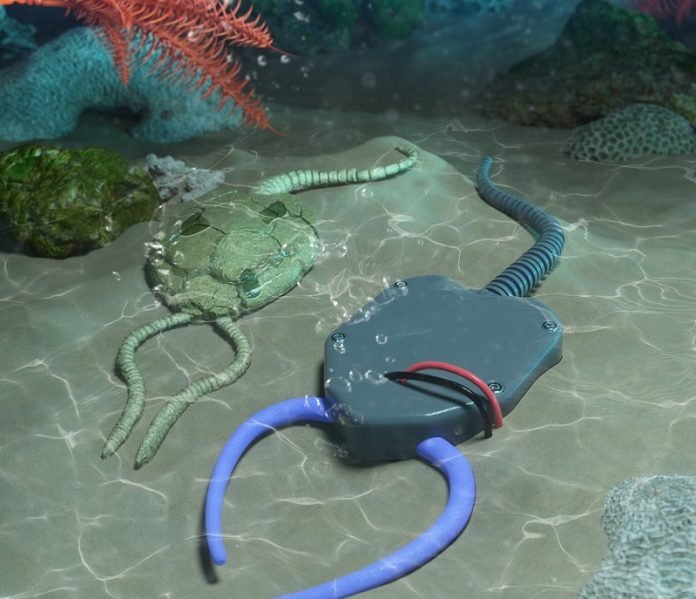
In a world where technology and biology intertwine, a team of scientists and engineers is looking back in time to revolutionize the future of robotics.
Led by Richard Desatnik at Carnegie Mellon University, alongside collaborators from Europe, they’re diving deep into history to create robots unlike any before.
At the heart of their research are creatures from the ancient oceans, specifically pleurocystitids, which swam the seas around 500 million years ago.
Soft robotics is a field that focuses on making robots from materials that are, as the name suggests, soft.
This makes the robots not only flexible but also safe for humans to interact with.
They can be used in a variety of ways, from medical devices that assist in surgeries to tools that improve efficiency in everyday tasks.
But what’s really exciting is how these robots could help us explore places that are hard to reach, like the depths of the ocean or the vastness of space.
Desatnik and his team are not just creating any robots; they are drawing inspiration from the past. They believe that by studying the movement of ancient sea creatures, they can uncover secrets of locomotion that have been lost to time.
At the 68th Biophysical Society Annual Meeting in Philadelphia, they shared how they’re bringing the pleurocystitids back to life, in a manner of speaking, through robotics.
These ancient animals, related to today’s sea stars and sea urchins, had a unique way of moving around. They possessed a muscular stem or tail that helped them glide along the ocean floor.
By examining fossils and using modern technology like CT scans, the team could visualize the 3D shape of pleurocystitids and simulate their swimming methods. This research led to the creation of a soft robot that mimics the creature’s movements.
The team discovered that a sweeping motion of the stem was key to the pleurocystitids’ movement. Interestingly, they also found that a longer stem, which evolved over generations, could make the creatures move faster without using more energy. This insight could be a game-changer for designing underwater robots for tasks such as geological surveys or repairing underwater equipment.
This innovative approach, which the researchers call paleobionics, does more than just create new types of robots. It opens a window into the past, offering clues about evolution, biomechanics, and the potential of soft robot movements.
By studying animals that thrived millions of years ago, Desatnik and his team are not only paying homage to nature’s ingenuity but are also paving the way for a future where robots are more versatile, efficient, and in tune with the natural world.



